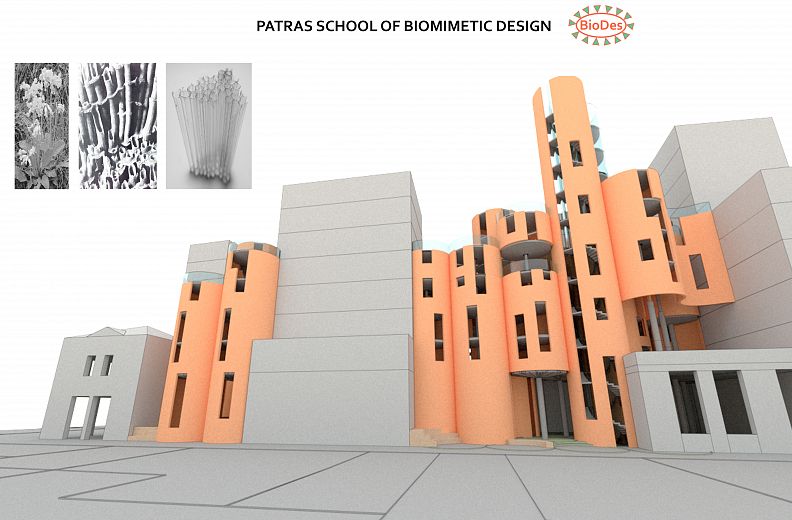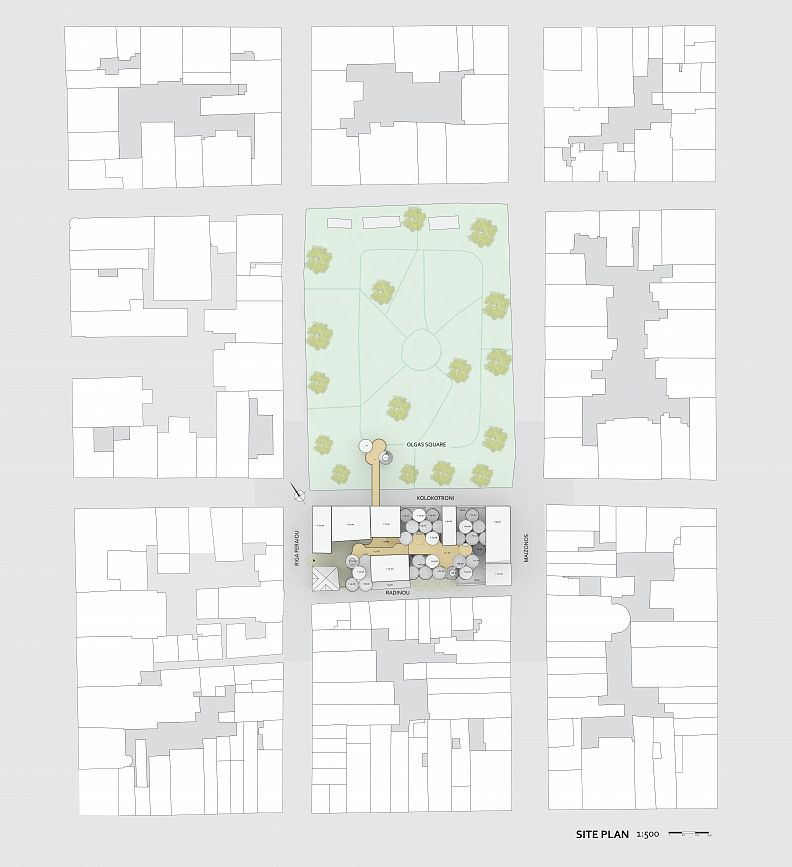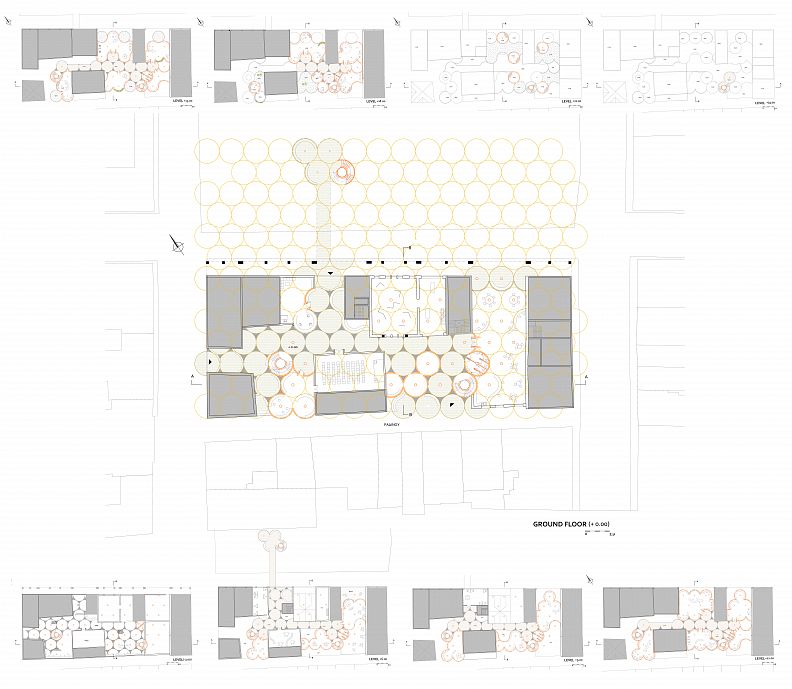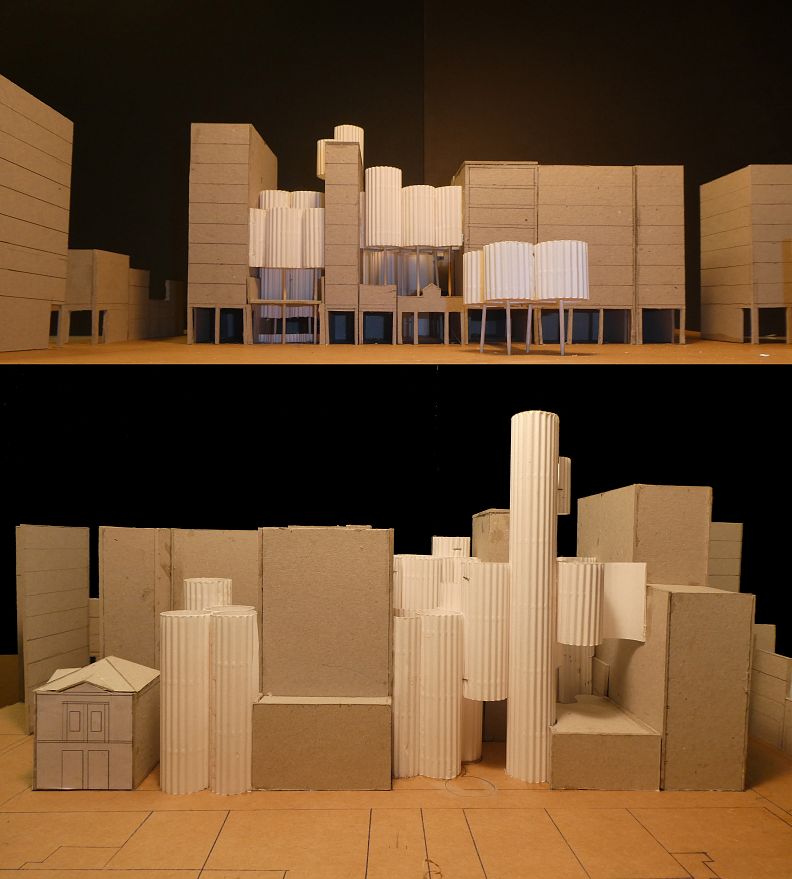PATRAS SCHOOL OF BIOMIMETIC DESIGN

Project idea
The project is about the design of a School of Industrial Design of 3500 m2 in the dense urban fabric of the city of Patras in Greece. The urban plot is occupied by a diversity of buildings ranging from the 19th century to our times and varying in volume from two-storey neoclassical building to 10 storey apartment buildings. The urban block is characterized by a haphazard and amorphous distribution of building volumes that result in a messy and disfigured streetscape.
The aim of the project is twofold.
The first is to respond to the program of a new school of design. The new school is herewith proposed to be a thematic industrial design school with an emphasis on bio-mimetic design, i.e. the design of products, mechanisms and components that draw inspiration and analogical ideas from natural forms and natural growth processes.
The second aim is, through the insertions of a new school, to regenerate the urban block with student life and remedy its urban image with a balanced interplay of building volumes that will contribute to the overall image of the nearby main square and the immediate urban environment at large.
Beyond the specific intervention, the project aims at showcasing a paradeigmatic method of architectural intervention to similarly disfigured urban blocks of the city.
The central idea of the architectural proposal is the invention and use of a morphological module that could grow vertically, and proliferate horizontally in locally differentiated densities so that to occupying all available space in the urban block and partially substitute some of the existing buildings so that to provide a new integrated urban entity that appears like a parasitic multicellular organism that grows vertically and proliferates horizontally adapting to the urban void and colonizing it sporadically.
Project description
A cylindrical self supported module of 5 meters in diameter is used to create bundles of different size and extending vertically in various heights that occupy the void of the urban block and grow out of it. A circular grid of the these modules pervades all voids of the urban block and permeate selectively and locally existing buildings, so that a create an extensive organism that rises locally to accommodate individual and collective laboratory space, classrooms and offices. The coexistence, encounter and even class of the proposed organism with the existing building are aimed to enliven the urban block.
All common and public functions are situated in the ground floor and comprise official and students entrance, a multipurpose hall, exhibition space for the creations of the students and a refectory.Laboratories of material and crafting are situated in the basement while laboratories of biotic cultivations and software engineering are being dispersed to upper floors. The image of the building complex is one of adjacent cylinders in different heights while in the interior the cylinders open up to create a multipurpose fluid space. The building organism swiftly adapts to the void and establishes synergies with the existing buildings by extending to occupy part of their cell.
Technical information
The cylindrical module is self supported and consists of a cyclical concrete slab supported by a central pillar. Adjacent modules are united by metal U profiles filled with either light concrete or glassplates. External walls are made of either autoclaved aerated concrete (AAC) blocks or double cement boards. A wooden deck pervades all units and creates a unified floor.



















